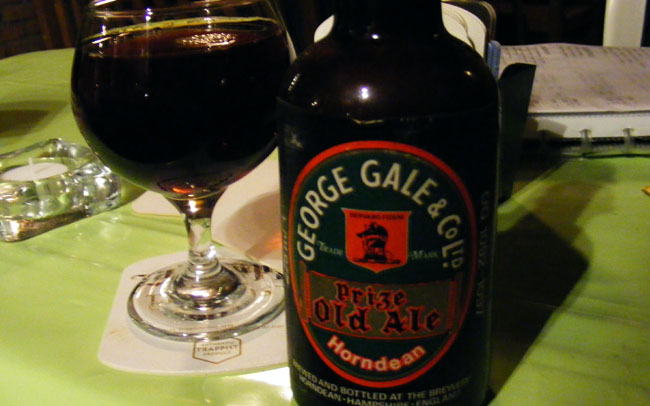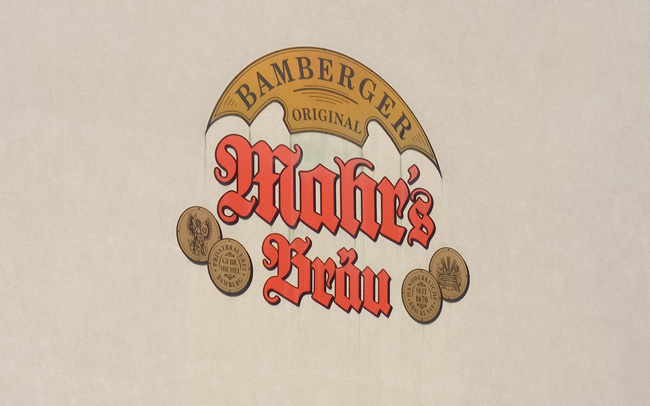Visit the Boak and Bailey's Beer Blog site
On this first Saturday in October, here’s our recommended reading from the world of beer, including good news, bad news, and lots in between.
First, the good news: Kelham Island Brewery of Sheffield has been saved by a consortium including Thornbridge, as Pete Brown reports:
I don’t know too much about the other people involved in the consortium, but I do know Tramlines now defines Sheffield as much as the brewing tradition Wickett began. But it feels so right that Thornbridge is part of this move. Without Kelham Island, there would be no Thornbridge. Now, without Thornbridge there would be no Kelham Island. There couldn’t be a more perfect end to what started out looking like a tragic story.
We’ve been wondering for a while why more independent breweries don’t merge and/or take each other over. As some established names fall in the current crisis, maybe we’ll see more of it. Speaking of which…
The bad news is that Skinner’s Brewery of Truro has gone into administration (BBC). We’ve never been hugely fond of Skinner’s beer, or of its rather old skool branding, but it is a major player in Cornwall. This will leave St Austell dominant.
 It’s no coincidence that the weekly article from Pellicle so often takes this top spot. The editors continue to commission interesting pieces from interesting people – and to give them the promotion they deserve. This week, it’s Martyn Cornell on the surprisingly interesting story of Gale’s Prize Old Ale:
It’s no coincidence that the weekly article from Pellicle so often takes this top spot. The editors continue to commission interesting pieces from interesting people – and to give them the promotion they deserve. This week, it’s Martyn Cornell on the surprisingly interesting story of Gale’s Prize Old Ale:
If Gale’s Prize Old Ale were a building, it would long ago have been listed Grade 1 by English Heritage as something of exceptional national importance. The survival of this rich, strong, deep, sweet-sour, dark, fruity, umami-laden beer—since the takeover and closure of its original home, the Gale’s brewery in Horndean, Hampshire, by the London brewer Fuller, Smith & Turner in 2006—is almost miraculous… The beer is produced using the solera system, where a batch of each new brew has a quantity of the previous brew added to it. In return a vat of the old brew is topped up with new beer every year, ensuring the continuity of microorganisms going back year upon year to, in this case, the early 1920s.
 We’ve got Bamberg on our minds – just another week! – and have fond memories of Mahr’s Ungespundet, so one of Jeff Alworth’s latest pieces was a delight to read. In it, he lays out the history of that particular beer and comments on its influence on American lager brewing in recent years:
We’ve got Bamberg on our minds – just another week! – and have fond memories of Mahr’s Ungespundet, so one of Jeff Alworth’s latest pieces was a delight to read. In it, he lays out the history of that particular beer and comments on its influence on American lager brewing in recent years:
Americans get caught up in the concept of style, but places like Belgium and Franconia confound them. Indeed, in both places the much better way to think of local beer is through the lens of process and culture. The classic Franconian brewery reminds me of Czechia: local maltings that produce distinctive profiles, decoction mashing, open fermentation, and finishing touches that include unfiltered or naturally-carbonated casks. Not every brewery does these things, or even most of them, but the flavor profiles those techniques produce—a natural, rustic rawness, layers of character, a propensity for full malt flavors—remain the North Star for breweries… Americans are discovering these beers because of their rusticity and character. While many of the great Bavarian lagers are famous for their accomplishment and refinement, Franconian lagers are funky, unexpected, and unusual. Which of course makes them perfect targets for craft breweries.
 Eoghan Walsh is back! After the publication of his excellent book (do buy it) he had a well-earned break. Now he’s back on the beat with a substantial post about de la Senne Zinnebir which has just turned 20:
Eoghan Walsh is back! After the publication of his excellent book (do buy it) he had a well-earned break. Now he’s back on the beat with a substantial post about de la Senne Zinnebir which has just turned 20:
Now, I’ve written at length about the importance of Zinnebir both to me and to the origins of this very website… You might even call me a Zinnebore… So, instead of me rattling on about my love for this epochal beer, I thought I would ask some of the beer’s (and Brasserie de la Senne’s) ardent fans – brewers, writers, drinkers – for their favourite memories, their Zinnebir light bulb moments, and what inspiration the beer has played in the lives, personal and professional. And from Brussels, Prague, Toronto, Bangkok, Santa Rosa, and elsewhere – here’s what they had to say.
 Courtney Iseman had a rough week but found solace in a simple glass of Altbier:
Courtney Iseman had a rough week but found solace in a simple glass of Altbier:
I don’t like routine in the sense that I like each day to be a little different and fluid, but when something really rocks my entire life off of its tracks and the reality I know gets muffled and distant, I feel untethered, like someone Olivia Colman would play in a film. And so I begin to look for some kind of North Star. I reach for something familiar that will act as the cord to yank me back inside the space shuttle (again, that most likely makes zero sense)… This time, my North Star was an altbier. A good Altbier at a good beer bar with a good chat. As I swallowed the first sip of that Uerige, I felt like I had just been yanked from underwater, gasping for those first few gulps of life-giving air. I know that sounds very dramatic but a, it’s true; b, I do love altbier a whole lot; and c, if you don’t fancy a little ~theatre~ with your beer missives then perhaps this newsletter is not for you!
 Back to Pete Brown: he’s been thinking about cask ale again. This time, he’s got a radical suggestion – sell less cask ale to sell more cask ale:
Back to Pete Brown: he’s been thinking about cask ale again. This time, he’s got a radical suggestion – sell less cask ale to sell more cask ale:
These are the pubs where there’s maybe one handpull on, or three with two turned round for most of the week. That handpull probably serves Doom Bar or Greene King IPA, because if you’re reducing your range after lockdown, in theory it makes sense to stick to familiar brands. But this simply reinforces the dull, staid image of cask, on a bar where spirits, cocktails, craft beer and lagers like Madri all have a bigger, more colourful presence than they did three years ago. And so the cycle accelerates… So maybe it’s time to rip cask out of those 39.3% low volume, low share pubs, or at least a good proportion of them… An additional 13.9% volume loss might seem unbearable on top of the volume loss the market is already suffering. But you’d be cauterising the wound. You’d be getting rid of the vast majority of shit pints of cask beer that are being served every day.
Finally, from Twitter…
I must say, placing the Ukraine Media Center Lviv just in the building with a top-class beer pub on the ground floor was a tricky decision.
pic.twitter.com/KMv8J5AJBD
— Illia Ponomarenko

(@IAPonomarenko)
September 23, 2022
News, nuggets and longreads 1 October 2022: Autumn Almanac originally posted at Boak & Bailey's Beer Blog
More...
It’s no coincidence that the weekly article from Pellicle so often takes this top spot. The editors continue to commission interesting pieces from interesting people – and to give them the promotion they deserve. This week, it’s Martyn Cornell on the surprisingly interesting story of Gale’s Prize Old Ale:
We’ve got Bamberg on our minds – just another week! – and have fond memories of Mahr’s Ungespundet, so one of Jeff Alworth’s latest pieces was a delight to read. In it, he lays out the history of that particular beer and comments on its influence on American lager brewing in recent years:
Eoghan Walsh is back! After the publication of his excellent book (do buy it) he had a well-earned break. Now he’s back on the beat with a substantial post about de la Senne Zinnebir which has just turned 20:
Courtney Iseman had a rough week but found solace in a simple glass of Altbier:
Back to Pete Brown: he’s been thinking about cask ale again. This time, he’s got a radical suggestion – sell less cask ale to sell more cask ale:
(@IAPonomarenko) September 23, 2022




 Reply With Quote
Reply With Quote